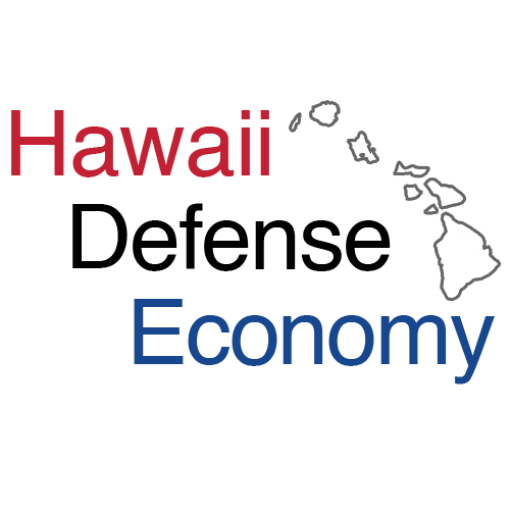About
The Hawaii Defense Economy (HDE) project is developed by the State of Hawaii, through the Department of Business, Economic Development, and Tourism (DBEDT), with support from the U.S. Department of Defense – Office of Local Defense Community Cooperation.
The HDE project uses data from U.S. Department of Defense (DoD) contracts and grants awarded in the state of Hawaii to better understand the defense industry supply chain and improve the state’s response to future changes in military requirements and federal spending levels.
The HDE website is also a resource for individuals and businesses seeking to gain insight into contracting trends and business opportunities for providing goods and services to the DoD in Hawaii. For more information about navigating and leveraging the resources available on the HDE website, review the HDE user guide.
Reports
2020 Phase II HDE SWOT Analysis: This report provides a comprehensive analysis of strengths, weaknesses, and potential opportunities and threats (SWOT) for key industries that play or could play a major role in Hawaii’s defense economy.
2020 Phase III HDE Action Plan: This report provides a proposed action plan of strategic recommendations based on the SWOT Analysis Report to guide future defense industry resilience efforts, which includes: 1) a Hawaii-focused DoD industry specific alliance designed to identify current and future industry challenges and develop solutions; and 2) a partnership to provide immediate assistance to local DoD contractors and small businesses to meet new cybersecurity compliance requirements.
FY 2021 OLDCC State of Hawaii Report: This report provides an analysis of Department of Defense personnel and contractual spending in Hawaii during Fiscal Year (FY) 2021 to help state and local officials assess their region’s dependence on defense spending and to target assistance to support more resilient communities and companies.

Data Methodology & Terminology
Defense Spending Methodology
All contract data are from USASpending.gov and include 1) prime contract and assistance awards the federal government made to private- and public-sector contractors and 2) prime contractor reported subcontract and subgrant awards that prime award recipients provided to sub-contractors/ sub-grantees. Contracts are the principle method through which the Department of Defense (DoD) and other federal agencies spend money. The phrase “contract spending” reflects federal agencies’ use of contracts with suppliers to purchase all products and services over a legally specified micro-purchase threshold.
For prime contract and assistance awards, the data only includes “Hawaii” as the place of performance and awarding agency codes for DoD, General Services Administration (GSA), or awarding subagency United States Coast Guard (USGC), which is this website’s scope of defense related spending. Annual periods are created based on a refresh date that considers the 90-day blackout period for DoD contract awards for operational security reasons. Rolling 12-month periods are established using this refresh date. For example, if the refresh date is 31 March 2020, then the 1st annual period would be 2 April 2019 thru 31 March 2020, and the 2nd annual period would be 2 April 2018 thru 1 April 2019 (Note: 2020 has 366 days). This approach decouples from fiscal year reporting, facilitating comparisons across annual periods with equal numbers of days.
The analysis apportions prime contract obligation and assistance amounts to these annual periods based on the lower of period of performance in days of the contract or 365 days. The period of performance is determined by the difference between the action date and the period of performance current end date. For example, if the action data is 3 March 2019 and current end date is 1 July 2019, then the period of performance would be 120 days, and an obligation of $100,000 for the rolling annual periods for Year 2 (2 April 2018 thru 1 April 2019) and Year 1 (2 April 2019 thru 31 March 2020) would be apportioned 25% or $25,000 for Year 2 and 75% or $75,000 for Year 1. De-obligations, indicated by a negative amount, are not apportioned across annual periods, but rather are taken in the period matching the action date.
For prime contractor reported subcontract and subgrant award data, the analysis only includes records with the reporting prime or the recipient subcontractor/ subgrantee having a place of performance as Hawaii. For example, this would include a prime contractor with a place of performance outside of Hawaii reporting a subcontract with a place of performance inside of Hawaii. Similarly, the reporting prime contractor could have a place of performance inside of Hawaii and the recipient subcontractor could have a place of performance outside of Hawaii. A different approach was used to allocate sub-award/ sub-grant awards to the rolling annual periods because, unlike prime award records, subawards do not list the beginning and end of a sub-award’s period of performance.
Job & Economic Output Estimation Methodology
The analysis matches the U.S. Bureau of Economic Analysis (BEA) RIMS II Type II multipliers for Honolulu to the NAICS reported in the contract and subcontract data (this field is not available for assistance awards) at various NAICS levels due to incomplete industry multipliers at the 6-digit level. Type II Multipliers account for both the interindustry effects (direct and indirect) and household‐spending effects (induced) of a final‐demand change. Two Type II Multipliers are used in the analysis: 1) Final-demand Employment and 2) Final-demand Output.
- Final-demand Employment: Represents the total change in number of jobs that occurs in all industries for each additional 1 million dollars of output delivered to final demand by the industry corresponding to the entry.
- Final-demand Output: Represents the total dollar change in output that occurs in all industries for each additional dollar of output delivered to final demand by the industry corresponding to the entry.
Key Terminology
- Net Dollar Flows: Sum of Prime Contract Obligations flowing into the state + Sum of Subcontract Awards flowing into the state from Out-of-State Primes – Sum of Subcontract Awards flowing out of the state from In-State Primes.
- Net Jobs: Sum of Estimated Jobs flowing into the state from Prime Contract Obligations + Sum of Estimated Jobs flowing into the state from Subcontract Awards from Out-of-State Primes – Sum of Estimated Jobs flowing out of the state from Subcontract Awards from In-State Primes. Job estimates are based on the Final-demand Employment multipliers.
- Net Economic Output: Sum of Estimated Economic Output flowing into the state from Prime Contract Obligations + Sum of Economic Output flowing into the state from Subcontract Awards from Out-of-State Primes – Sum of Economic Output flowing out of the state from Subcontract Awards from In-State Primes. Economic Output estimates are based on the Final-demand Output multipliers.
- DoD Dependency: Analysis’ scope of defense related Net Dollar Flows divided by total employment by state or county.
